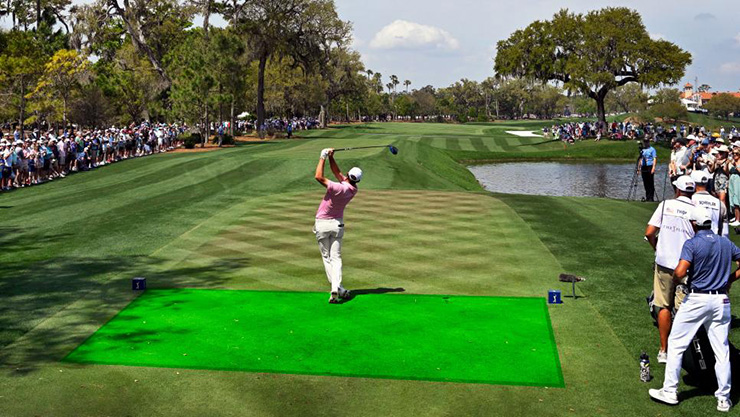You’re on a par-3 tee and the shot you’re facing is either a hard 7-iron or soft 6-iron. You’re between clubs, so to speak. The 7-iron might get you there and the 6-iron might put you above the hole in three-putt territory. We’ll spare you the swing advice you might need to overcome this dilemma, and instead focus on a “hack” you might not have realized: You don’t have to play exactly between the tee markers. In fact, you can play up to eight feet, give or take an inch, behind the markers and still be considered in the teeing area—it’s within the Rules of Golf and we’ll explain.
First, understand that the teeing area is defined as “a rectangle that is two club lengths deep where the front edge is defined by the line between the forward-most points of two tee-markers set by the Committee, and the side edges are defined by the lines back from the outside points of the tee-markers.”
In other words, if you were hovering a drone over the top of a tee box, picture a rectangular “zone” where you’re allowed to play your tee shot from. And the keyword in the preceding paragraph is “club length.” Just because you’re deciding between a 6-iron and a 7-iron, that doesn’t mean you have to use the one you choose to measure the distance behind the marker you’re allowed to play from. In fact, a “club length” is a recent change to the Rules of Golf under Definitions. It now states that the longest club in your bag, other than your putter, is considered a “club length” when measuring for relief. In most cases it’s going to be your driver and, as the rules have specified, that club can be no longer than 48 inches (although there is a local rule that can reduce the length allowed to 46).

So when you do the math, two club lengths using a 48-inch driver is 96 inches, or eight feet. Meaning, assuming your driver is 48 inches (it’s actually probably around 45 inches), you’re able to tee a ball more than two yards behind the markers. And maybe those two yards make just enough of a difference that going with a 6-iron instead of a 7-iron puts you a lot closer to pin-high.
What would happen if you went a bit too far in your estimation of the zone and played beyond the teeing area—or in front of it, for that matter? In match play, your opponent/s can cancel your stroke and you’d have to play again from inside the teeing area (no penalty). If your opponent/s doesn’t care about your gaffe, you continue to play with the ball you played from outside the teeing area. In stroke play, you are required to correct the mistake by playing again from inside the teeing area, but you still get a two-stroke penalty.
MORE GOLF DIGEST RULES REVIEWS
Can you hit a provisional ball after hitting a shot into a penalty area?
My opponent took a generous drop after hitting into a hazard. Can he be DQ’d for that?
Can I clean mud off my golf ball while playing a hole?
Can you repair divot holes or pitch marks in your line before hitting a shot?









